
Map of material distribution in the disk around protostar G358-MM1. The white “+” marks the location of the protostar. The contour lines indicate signal strength. The colors represent the line-of-sight velocities. Movement away from the viewer is shown in red/orange and movement towards the viewer is shown in blue/green, indicating that the disk is rotating. Overlaid gray lines indicate the spiral arms identified through data analysis. Credit: R. A. Burns
Recent observations have uncovered a spiral pattern in the material disk surrounding a young, high-mass protostar, suggesting the presence of gravitational instability within the disk. This finding carries significant implications for how high-mass stars form.
During the process of star formation, a protostellar disk serves as a means of delivering material to the nascent “protostar” at its core. In the case of high-mass protostars that have already surpassed 8 times the mass of the Sun and continue to grow, it is hypothesized that instead of a steady stream, clusters of material periodically descend from the disk onto the protostar, triggering brief but intense growth spurts.
An international research team led by Ross A. Burns at NAOJ used VLBI techniques combining radio telescope arrays around the world to map the maser emissions in the disk around a high-mass protostar known as G358-MM1. This high-mass protostar is the third-ever case of an observationally confirmed growth burst, and was intensely studied by the maser monitoring organization (M2O). The team was able to investigate the phenomenon in detail for the first time.
The observational results show clear rotation around the central protostar and a spiral pattern with four arms. Spiral arms in rotating protostellar disks are a sign of instability, a characteristic which was long theorized to be associated with massive star formation, but had yet to be proven observationally. This discovery not only revealed the first spiral-driven accretion disk in a high-mass protostar but also linked spiral arm instabilities with the episodic growth bursts that are central to high-mass star formation theory.
This research used a new technique known as “heat-wave mapping.” When a clump of material falls from the disk on to the protostar, it releases a burst of energy that heats the inner part of the disk, exciting methanol maser emission. This heat-wave then moves outward, heating increasingly more distant parts of the disk as time passes. By observing the regions that ignited maser emission caused by this heating it was possible to map the surface of the disk in G358-MM1.
The team, comprising a collaboration of more than 90 astronomers from across the globe, now hopes to apply this technique to observe the disks of other high-mass protostars which undergo growth bursts in the future.
Reference: “A Keplerian disk with a four-arm spiral birthing an episodically accreting high-mass protostar” by R. A. Burns, Y. Uno, N. Sakai, J. Blanchard, Z. Fazil, G. Orosz, Y. Yonekura, Y. Tanabe, K. Sugiyama, T. Hirota, Kee-Tae Kim, A. Aberfelds, A. E. Volvach, A. Bartkiewicz, A. Caratti o Garatti, A. M. Sobolev, B. Stecklum, C. Brogan, C. Phillips, D. A. Ladeyschikov, D. Johnstone, G. Surcis, G. C. MacLeod, H. Linz, J. O. Chibueze, J. Brand, J. Eislöffel, L. Hyland, L. Uscanga, M. Olech, M. Durjasz, O. Bayandina, S. Breen, S. P. Ellingsen, S. P. van den Heever, T. R. Hunter and X. Chen, 27 February 2023, Nature Astronomy.
DOI: 10.1038/s41550-023-01899-w
The study was funded by the Japan Society for the Promotion of Science, the University of Guanajuato, the Ministry of Education and Science of the Republic of Poland, the National Science Centre, Poland, the Italian Ministry of University and Research, and the Ministry of Science and Higher Education of the Russian Federation.

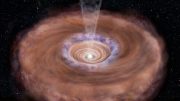


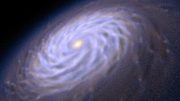

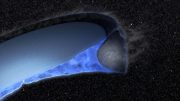
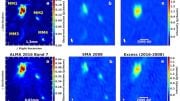
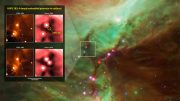
Be the first to comment on "Spiral Pattern Provides New Clues Into How High-Mass Stars Form"